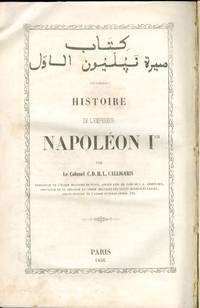
Antique Thaumatropes Set , c.1837 France , " Trompe-l’oeil ou les plaisirs de Jocko "
- Used
- Condition
- Very Good+/Good-
- Seller
-
Tempe, Arizona, United States
Payment Methods Accepted
About This Item
Exceptionally rare early thaumatrope collection. The set is complete with 24 discs housed in the publisher's box. Each disc has hand-colored engravings and tied silk strings. Distributed on the cusps of the Georgian and Victorian eras by Alphonse Giroux, Paris, 7 rue du Coq Saint-Honoré. In remarkable antique condition with astonishingly vivid colors and all strings attached.
Subject Matter
The collection includes an interpretation of Henry Fuseli's painting "The Nightmare" (1782) with a woman in a vivid green gown, sleeping on a chaise, a demon perched upon her breast. Also, Harlequin (or Arlequin), the theatrical devil, is depicted dancing. (A reference to Armand d'Artois' "folie-vaudeville" Le Sultan du Havre, and reminiscent of Charles Malo's Almanach des Spectacles.) There is also a classic depiction of Napoleon and of Aesop's vanity tale Fox and Crow. Represented fashions span eras and nationalities (see, for example, the courting couple in possibly Regency Era costume; masquerade lady; sword juggler; tightrope performer; mule driver; portrait painter). Sex, gender, and romance are especially showcased by a woman in a state of undress, and a monocled male gaze on a woman's posterior. Other anthropoligical peeks at Victorian life include horticulture and playing cards. Care for a game of Whist or Commerce out in the garden?
There are scarce areas of damage, most notably a crack on the basketed floral arrangement, a crease in the trick-rider, and foxing on the box lid and the disc depicting Napoleon. Note: Thin lines appear across some of the photos, which do not indicate any damage. These are shadows in the image and are distinguishable from the light foxing observed on several cards.
Scarcity
This is one of perhaps only two in existence. An identical edition is housed in the Princeton University Graphic Arts Collection. A dealer in Paris displays an incomplete set. An even earlier (1830) set (of 24) exists in the National Center for Cinema and the Moving Image in Paris collection.
Presumably, only two of the first sets ever issued have survived -- a boxed set of 12, issued by Dr. John Paris in London in 1825. One existed in the private collection of the late Richard Balzar. Much of Balzar's collection was bequeathed to The Academy Museum of Motion Pictures (USA); however, the object is not listed in their collection. The other is exhibited at the Art Museums of Colonial Williamsburg in Virginia.
Balzar also possessed an early American-issue thaumatrope collection (1840). That collection consists of 12 square cards and sadly lacks the box.
Please contact me to contribute information about surviving antique thaumatropes.
About Thaumatropes
From the Greek "thauma" (wonder) and "tropos" (to turn). Rolling the strings between the fingers spins the card rapidly, creating the optical illusion of merging two partial images on each side into one. (See the embedded demonstration video below.)
Sometimes called "Magic Circle" and "Rounds of Amusement," it is an optical toy and juvenile science education device. It demonstrated what was thought of at the time as the phenomenon of persistence of vision. This understanding would lead to animation and cinema. The cards' subjects included classical allusion and social satire, and often featured visual puns, providing a modern anthropological glimpse into Victorian humor.
Physician John Ayrton Paris presented the thaumatrope at the Royal College of Physicians in 1824 to demonstrate retinal persistence. The following year, he distributed them for sale as youth education ephemera.
Credit for the invention of the thaumatrope, however, remains disputed. In his autobiography, the "Father of the Computer," Charles Babbage, recounts the following anecdote: At a party, attended by Dr. Paris, astronomer John Herschel, and Dr. William Henry Fitton, a spinning coin is presented by one or the other of them as a method by which the viewer may observe both sides of the coin at once.
Attributions have also been made to inventors William Hyde Wollaston and David Brewster.
Our understanding of the scientific principles demonstrated by the thaumatrope can be ascribed to the works of Aristotle, Leonardo da Vinci, Isaac Newton, Johannes Segner, Count Patrice D'Arcy, John Murray, and Peter Mark Roget. The thaumatrope would lead to the inventions of the anorthoscope, zoetrope, tachyscope, praxinoscope, and phenakistoscope, pedemascope in cinema history. And human fascination with movement illusion goes back at least as far as 30,000 years, as observed in the Chauvet cave paintings in France.
approx. 7 x 7 x 3cm, 1.3oz
See all cards on YouTube or Instagram @anuncommonleaf.
Resources:
Trompe-l'oeil ou les plaisirs de Jocko (1837) in the Princeton University Graphic Arts Collection
Trompe-l'oeil ou les plaisirs de Jocko (1830) in THE CINÉMATHÈQUE FRANÇAISE, National Center for Cinema and the Moving Image (CNC), Paris, France
Thaumatrope (1825): in the Bucknell University Digital Commons
Stephen Herbert: The Thaumatrope Revisited; or: "a round about way to turn'm green"
(Includes images from Dr. Paris' first 1825 "Rounds of Amusement," presumably donated to The Academy Museum of Motion Pictures by the estate of Richard Balzar.)
Princeton University: pre-cinema optical devices
Collector's Weekly: The Dawn of the Flick: The Doctors, Physisists, and Mathematicians Who Made the Movies
NPR: Weekend Edition Saturday: Science: A Flicker Of Inspiration Brings Cave Drawings To Life
Special thanks to Stephen Herbert for his article, which largely informed the above description.
price-match promise. satisfaction guaranteed.
anuncommonleaf.com
Extended Description and Notes
https://www.youtube.com/watch?v=BhRWCVKLscg
https://www.youtube.com/watch?v=iWIOOThuUic&t=8s
Reviews
(Log in or Create an Account first!)
Details
- Seller
- anuncommonleaf
(US)
- Seller's Inventory #
- 99-36i
- Title
- Antique Thaumatropes Set , c.1837 France , " Trompe-l’oeil ou les plaisirs de Jocko "
- Format/Binding
- Publisher's Box
- Book Condition
- Used - Very Good+
- Jacket Condition
- Good-
- Quantity Available
- 1
- Edition
- Early Edition
- Publisher
- Alphonse Giroux
- Place of Publication
- Paris
- Date Published
- 1837
- Pages
- 24
- Weight
- 0.00 lbs
- Keywords
- thaumatrope, pre-cinema history, magic lantern, magic circle, rounds of amusement, optical device, ephemera, toy, retinal persistence
- Bookseller catalogs
- Ephemera; Rare Volumes; Exhibition-Quality Objects;
Terms of Sale
anuncommonleaf
About the Seller
anuncommonleaf
About anuncommonleaf
Glossary
Some terminology that may be used in this description includes:
- Device
- Especially for older books, a printer's device refers to an identifying mark, also sometimes called a printer's mark, on the...
Also Recommended
-

Save 10% on every purchase!
Join the Bibliophiles’ Club and start saving 10% on every book.
$29.95 / Year




